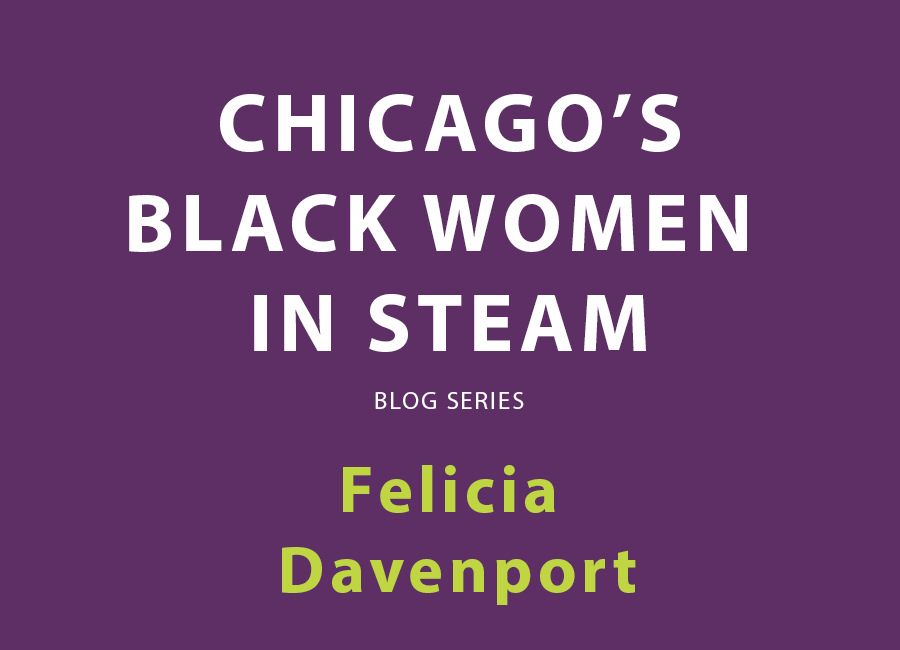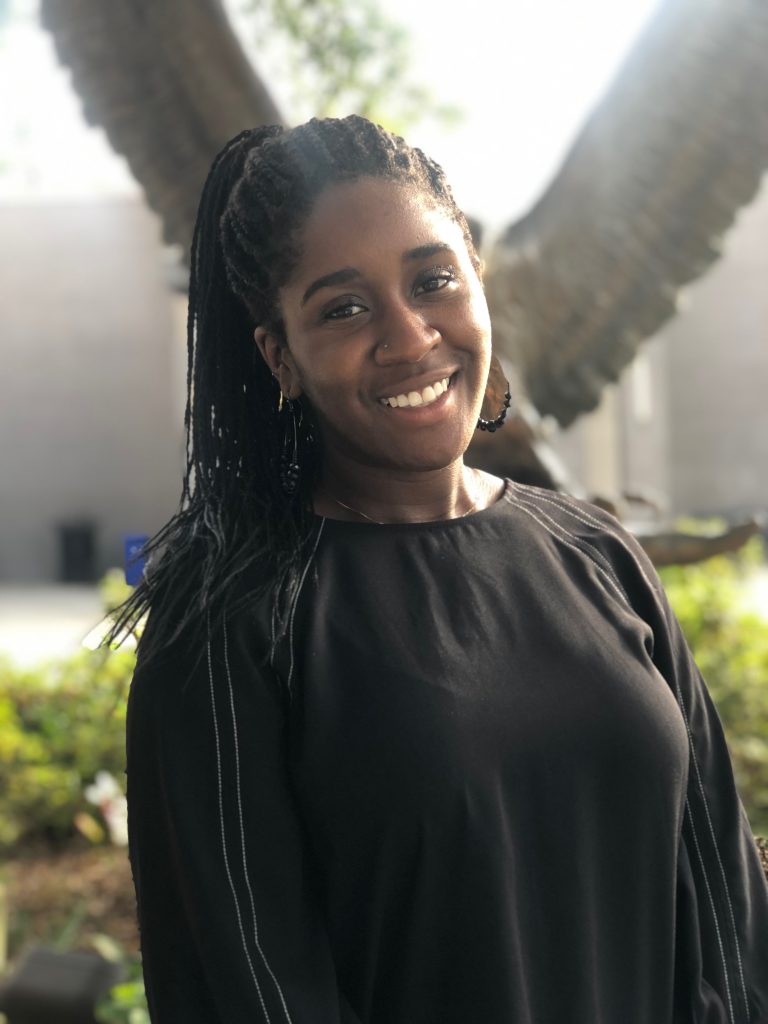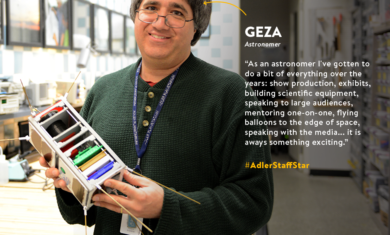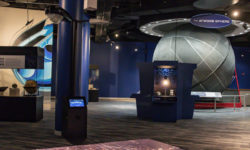Chicago’s Black Women in STEAM Series: Meet Felicia

“Chicago’s Black Women in STEAM” is a series on The Adler ’Scope that highlights the awesome women of Chicago who are doing amazing things in science, technology, engineering, art, and math fields here in our own community. Meet women of varying ages, backgrounds, and interests and learn their unique stories.
Felicia Davenport
Graduate Research Assistant at Georgia Institute of Technology

What first sparked your interest in physics and engineering?
My interest in physics and engineering was initially sparked through my experience playing golf, starting around the age of 10. I was always fascinated by the technical details of each move I was making and its importance, which I now know to be the biomechanics of the golf swing.
My sophomore year in high school, I met two new swing coaches who introduced me to a device named the “K-Vest”. Using the K-Vest requires wearing straps containing motion sensors on the wrists, upper-back, and waist. This enabled me to look into the biofeedback, and create a personalized training program for an optimized golf swing.
Shortly after beginning my training with the K-Vest, I was assigned a group research project in my “International Baccalaureate (IB)” physics class, where I collaborated with fellow peers studying chemistry within the IB program. Our project consisted of comparing the composition of top, middle, and lower-tiered golf balls and testing their performance using the K-Vest monitor. We then could determine if the cost of each golf ball was true to its overall value. After presenting this work, I then realized I wanted to continue researching sports and biomechanics.
Can you tell us more about your time at Chicago State University as a physics undergrad? What successes and challenges did you face?
Looking back, I’m highly appreciative of my experience studying physics as an undergrad at Chicago State University (CSU). The department offers different curriculum pathways for preparation for the next stage in your life, and I was pleased to learn there was a Biological Science (BIO) option for physics majors. If being a STEAM student wasn’t difficult enough, I also had to balance the workload of being a member and captain of CSU’s Division I women’s golf team, various campus programs (i.e. Honors College and Learning Assistant (LA) Program), and an undergraduate researcher. An introductory chemistry course in my first semester helped me develop essential skills for studying, time management, and conducting research ethically.
As a smaller institution that has encountered unfortunate financial difficulties, resources were limited throughout the institution, including the classrooms. However, the faculty members were eager to go above-and-beyond in providing opportunities to students which allowed their education to be comparable to and competitive with any other institution. The faculty exposed students to research practices and other valuable experiences early in their academic career to better prepare them. They also encouraged student involvement in Research Experience for Undergraduates (REU) programs at other institutions around the nation during the summer.
I was fortunate to be under the mentorship of Dr. Mel Sabella, who helped generate my exposure to these opportunities and allowed me to take leadership in being the first author in one of my two published research articles. Dr. Archibald Peters helped me in my preparation for graduate school in both the application and transitioning process. It is because of such exemplary faculty members that my experience was unforgettable and I was able to graduate with high honors.
What advice would you give to young girls of color who are interested in pursuing careers in STEAM?
It may sound cliché, but I would advise them to always pursue what they are passionate about and what drives them. If they are unsure, they can research various STEAM fields, look into possible careers that may align with their aspirations, and find people (faculty, students, etc.) who are already working in those fields or careers and reach out with their questions. Coming from someone who was, and sometimes still is, quite hesitant to network and reach out, you never know what opportunity could result from being proactive about your future. What better time to start thinking about your future career goals and aspirations than now?
Also, I feel very fortunate to have attended CSU, which was a Predominantly Black Institution (PBI), so I did not feel out of place studying in STEAM. Because of this, it was not until I started my graduate program this August that I became more proactive in finding student organizations that were designed as safe spaces for both women in engineering and Black graduate students. I’m learning how isolating the experience can be at any stage in pursuing STEAM, so I would advise young girls of color to find support groups or even try to bond with that other girl or person of color in your class so that you know you’re not alone.
Until the academic culture changes, it is true that people of color, especially women, tend to have to work much harder to prove themselves in any path of life, but especially in studying STEAM. You may get challenged and pushed past your limits, but please don’t lose sight of your goals and your self-worth. You are more than capable of doing anything you set your mind to do, just get out there and take charge of your dreams!
If everything went according to plan, what would you hope to be doing in your career in 10 years?
Ultimately, I would love to be a sports scientist. Whether it’s helping research, analyze, and optimize the biomechanical techniques of athletes or helping design and alter equipment to enhance their performance abilities.
I also plan to be an active member of outreach programs to help mentor young students, especially those from underrepresented communities. From an academic standpoint, young students of various backgrounds may be discouraged by surrounding influencers from pursuing STEAM majors if it’s an uncommon career choice within their community. The same deterrence occurs amongst young athletes, who are persuaded against studying in STEAM fields due to heavy time commitments from academics and athletics. This can lead to many students settling on another, and sometimes less desirable, path.
I want to establish and provide resources for those in this predicament to be able to experience the best of both worlds. Additionally, I would promote programs that expose underrepresented students at a young age to innovative research practices and topics to help better prepare them for the future.







